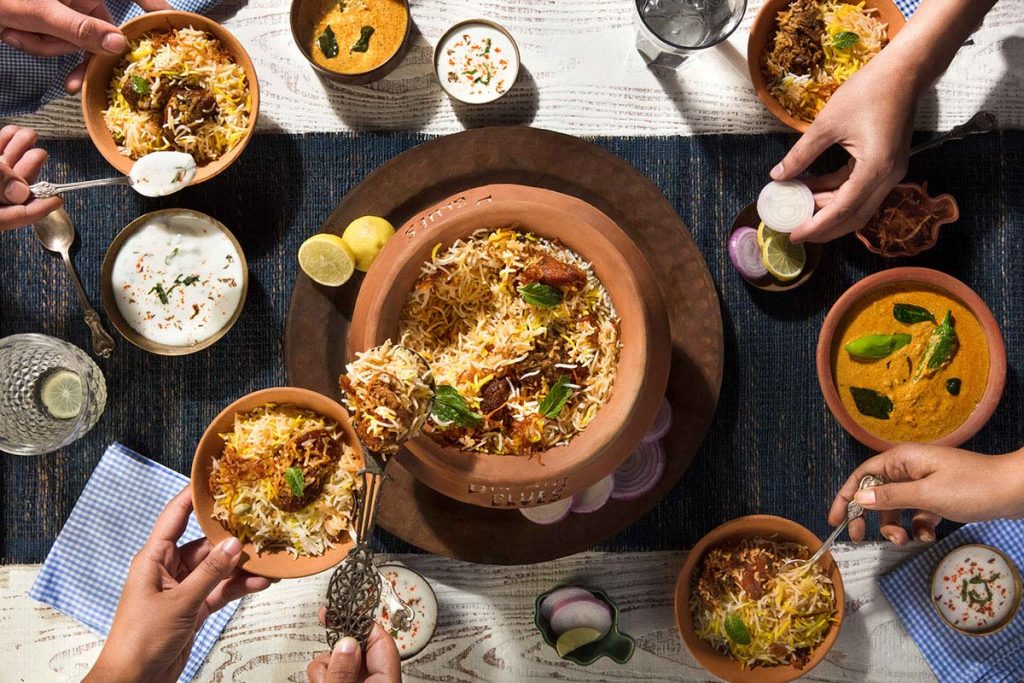New Delhi: Outranking many others as India’s favourite dish, the not so humble biryani is quite literally a melting pot of flavours, much like the country itself, and is now suddenly not just about culinary delights but also political choices.
Meticulously layered with rice and meat, and sometimes vegetables, tempered with aromatic cloves, pepper and cardamom and smatterings of saffron, biryani has many avatars – add to all that a dash of politics and a pinch of controversy and the popularity quotient spirals high.
“India is a mosaic where everybody retains their identity within a larger role and biryani is the best example of that. Everybody eats biryani, yet each biryani is different and we appreciate that,” said food critic and author Vir Sanghvi. He couldn’t have been closer to the truth. Each and every political may try to woo people with biryani, but then they all have different ideas and agendas. And yet all bank on bityani.
The rice dish is simply being used by political leaders for their own benefits despite it having become a part of the ‘Indian gourmet map’, added food writer Pritha Sen.
Making biryani requires careful assembling before it is packed into a cauldron, or a degh, sealed tight and slow cooked until the many favours percolate to each grain of rice. The number of ways of making biryani is as varied as the spices that go into it, with at least 19 varieties from different regions. And today it is just not a dish for the Muslims but for the entire gamut of society.
“Hindus too make biryani at home. Veg biryani is a big thing. While we don’t differentiate because it has become a part of our entire food repertoire, the present political regime is just dividing people for their own benefits,” said Sen.
The biryani, for long a symbol of a unified Indian identity, jumped from the dining table to become the stuff of political debate in January this year. That’s when BJP’s IT Cell head Amit Malviya shared a video claiming protesters at Shaheen Bagh were accepting Rs 500 and biryani to stage their sit-in against the Citizenship (Amendment) Act (CAA) and the National Register of Citizens (NRC). However, a website later reported that the video was shot at a shop some eight kilometers away from Shaheen Bagh and had no credibility.
In the run-up to the February 8 Delhi elections, Uttar Pradesh Chief Minister Yogi Adityanath also raged against the Aam Aadmi Party (AAP) for feeding biryani to protesters.
Sanghvi said it is biryani which has triumphed in the fight between its popularity and ‘political jeering’. This is evident by the entry of new businesses in the market, entirely dedicated to biryanis.
“There are two most contradictory developments happening at the same time. We are in the middle of the biggest biryani boom in history; whole restaurants dedicated to biryani have opened up everywhere in India,” he said.
“The other is biryani has become a quote phrase of politicians to refer to what they consider ‘Muslim appeasement’. So why are these two developments carrying on side by side? My view is that the political sneering is losing and biryani is winning,” Sanghvi added.
A quick search on a food delivery app backs Sanghvi’s assertion. Type keyword ‘biryani’ and scores of options open up in every area of the city.
According to Raymond Andrews, co-founder of ‘Biryani Blues’ which has 41 outlets in four cities and employs 600 people, apps have helped almost double the market in the last five years.
When the AAP won 62 of the 70 seats of the Delhi Assembly constituency February 11, many people ordered biryani to prove a political point. The surge in sales on Delhi’s election result day was the same as a Friday evening when people like ordering out, said Andrews.
“Biryani always had universal appeal. The surge in sales after the controversy wasn’t any different from a typical Friday evening. Biryani was popular even before ‘Swiggy’ and ‘Zomato’. However, the apps have helped the market almost double from what it was five or six years ago,” Andrews said.
Away from the furious political debate, Mohammad Irfan of Tahir Qureshi Kabab Corner near Jama Masjid in the walled city said only a few of his customers believe in politics. The rest tuck in as they always did.
“We have Hindus as well as Muslim customers. Our business has only gained over the years. I don’t think these politicians matter at all,” the 40-year-old said.
Workers at the shop, which has stood its ground in the crowded Urdu Bazaar for 60 years, ladle out chicken, mutton and buff biryani till they scrape the bottom of the cauldrons every day.
Region-specific preparations and ingredients have culminated in different types of biryanis across the country.
There is the Old Delhi biryani with the distinct tang of pickle, the super spicy ‘Memoni’ biryani from Gujarat, Tamil Nadu’s ‘Ambur’ biryani with ‘jeeraga’ samba rice, ‘Bhatkal’ biryani from coastal Karnataka with a generous infusion of grated onion, and ‘Thalassery’ biryani from Kerala with roasted nuts. Then of course, the arguably more famous cousins from Hyderabad, Lucknow and Kolkata biryani – and the list is unending.
